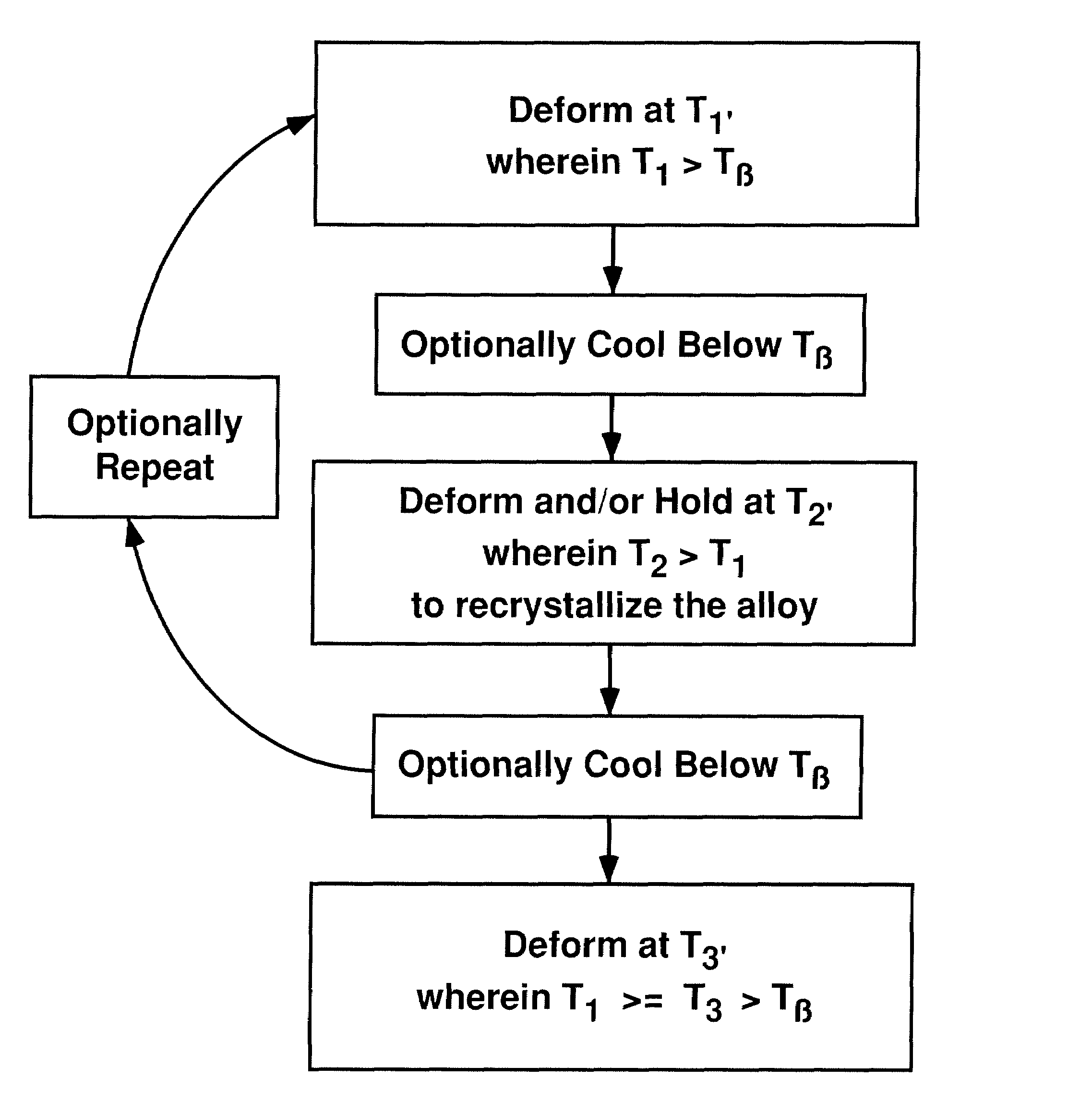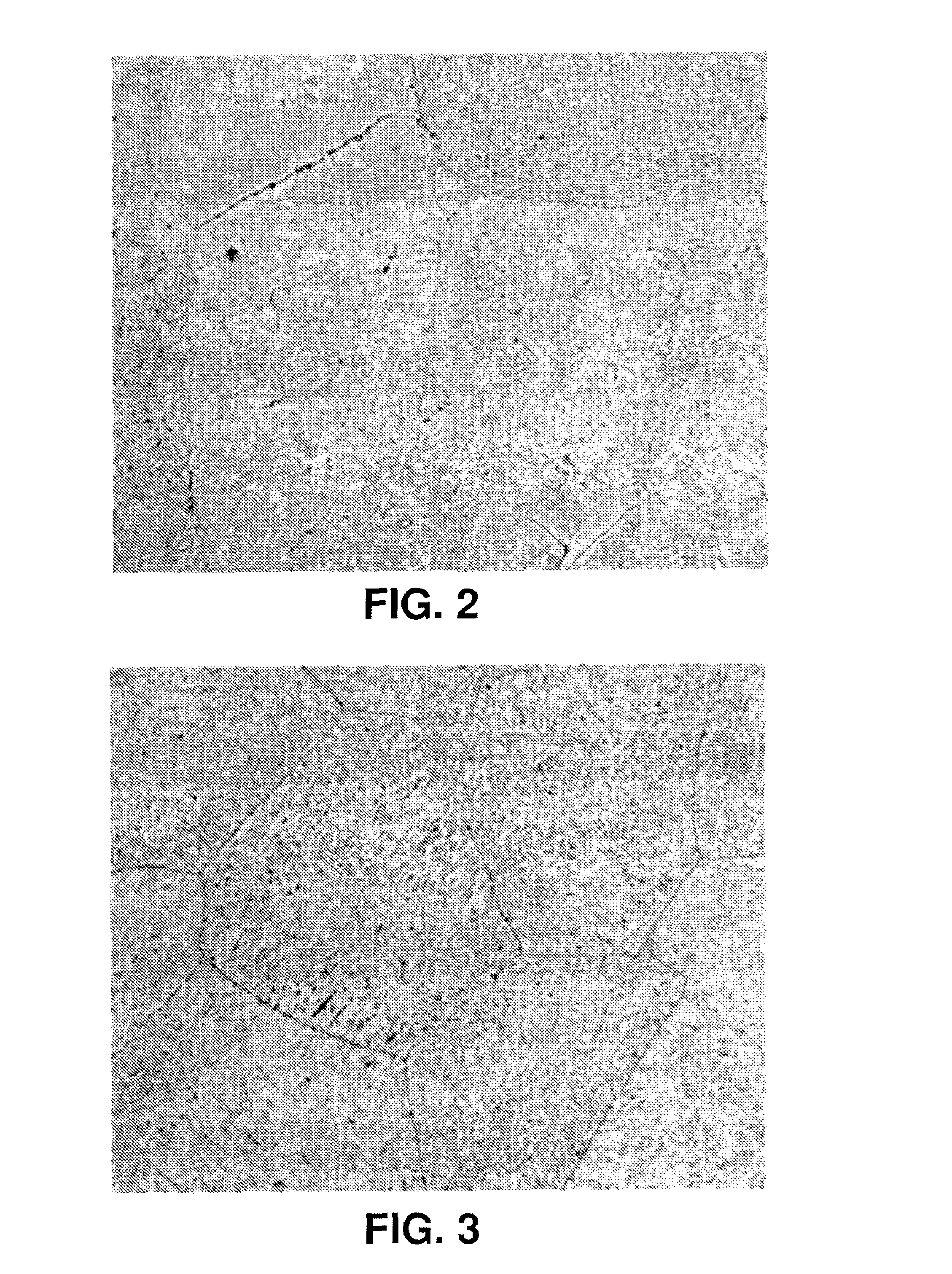Methods of beta processing titanium alloys
a technology of titanium alloys and beta processing, applied in the field of beta processing titanium alloys, can solve the problems of introducing a variety of defects into the alloy, alloys and near- alloys are generally more difficult to work than alloys, and the processing methods and routes used with one type of alloy may not be useful with another type of alloy, so as to reduce or eliminate the occurrence of sip and/or other processing related defects
- Summary
- Abstract
- Description
- Claims
- Application Information
AI Technical Summary
Benefits of technology
Problems solved by technology
Method used
Image
Examples
example
Part 1: Alloy Processing
[0074]An ingot of a Ti-17 near-β titanium alloy was cast and homogenized, and subsequently processed in accordance with various non-limiting embodiments for processing titanium alloys set forth above as follows. The Tβ of the alloy was approximately 1635° F., as determined by metallographic observation of samples of the material that were heat treated in 10-15° F. increments between 1610° F. and 1660° F. The nominal composition of the ingot is give below in Table 2.
[0075]
TABLE 2ElementWeight PercentAl5.0C0.03Cr4.0Cu0.05Fe0.15H0.015 maxMn0.05Mo4.0N0.02O0.11Zr2.0Sn2.0Ti + impuritiesBalance
[0076]The ingot was heated to 1950° F.±25° F. (about Tβ+315° F.) (“T1”), and straight draw forged at T1 to attain a reduction in cross-sectional area of about 32%. Thereafter, the ingot was reheated to T1 and subjected to a second pass of straight draw forging at T1 to attain a total (i.e., resulting from the first and second passes) reduction in cross-sectional area of about ...
PUM
| Property | Measurement | Unit |
|---|---|---|
| temperature | aaaaa | aaaaa |
| beta-transus temperature | aaaaa | aaaaa |
| temperature | aaaaa | aaaaa |
Abstract
Description
Claims
Application Information
 Login to View More
Login to View More - R&D
- Intellectual Property
- Life Sciences
- Materials
- Tech Scout
- Unparalleled Data Quality
- Higher Quality Content
- 60% Fewer Hallucinations
Browse by: Latest US Patents, China's latest patents, Technical Efficacy Thesaurus, Application Domain, Technology Topic, Popular Technical Reports.
© 2025 PatSnap. All rights reserved.Legal|Privacy policy|Modern Slavery Act Transparency Statement|Sitemap|About US| Contact US: help@patsnap.com



